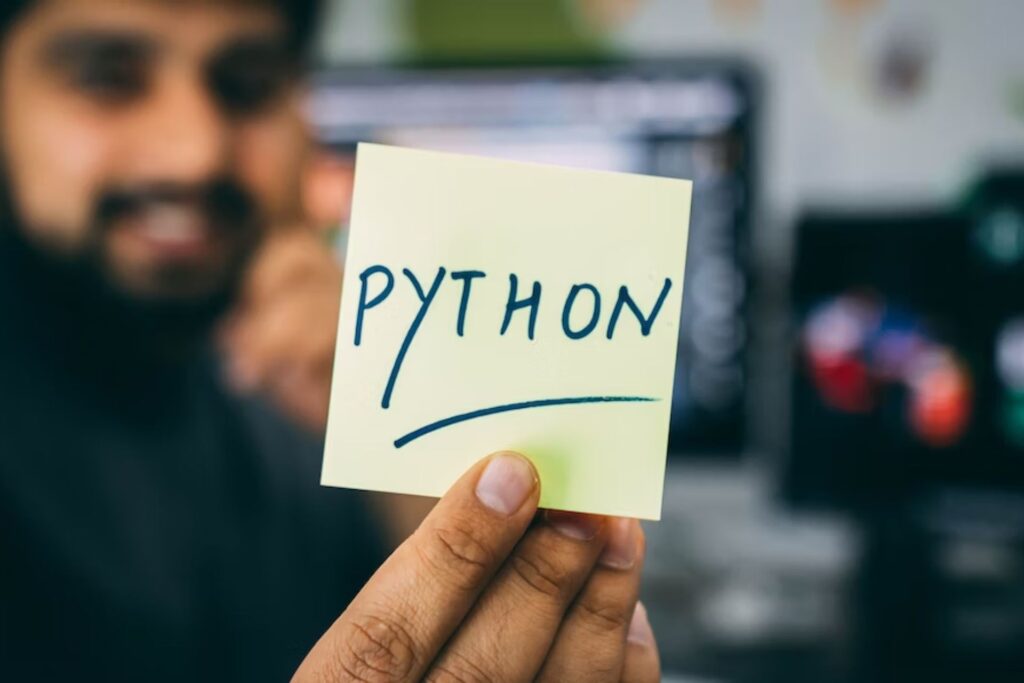
As an Amazon Associate, Modded gets commissions for purchases made through links in this post.
When you learn a new programming language, you must understand the shortcuts that can make your work much easier. One of the easiest shortcuts and most valuable tools in programming is knowing how to install modules in Python.
Python remains to be one of the most desired programming languages, thanks to its applications in back-end development and other fields like data science or analysis. Knowing how to work modules, as well as the shortcuts that can make using them much easier, can transform your entire knowledge of the language. It makes you a more competitive employee or more effective in passion projects or work tasks.

What Is a Python Module?
Though Python looks intimidating to anyone stepping into the world of programming for the first time, it’s actually beginner-friendly thanks to how easy it is to understand and how you can use it for just about anything. Modules can help newbie programmers learn how to group similar things together and work smarter, not harder.
A module helps you work on a longer piece of code or project without going back and working on something all over again. The module itself is just a piece of code that goes into the final project. This file can help you execute a longer code, or it might be just a part you don’t want to work on again, so you need to save it for later. The file name has “.py” at the end of it. When importing modules, you can connect certain pieces to other pieces or even put less significant modules into the main one, whatever you need for your project.
When you import a module, no matter how many times you try to import it, it only loads once. This tactic prevents you from accidentally executing the same code several times. Modules can also make your work easier to understand because it clumps similar attributes together, which can make a difference when your code frustrates you. Knowing how to install modules in Python is a great way to help yourself fully understand the code you’re working on and save you some time and grief.

How to Install Modules in Python With 5 Easy Hacks
Learning how to install modules in Python is easy as long as you understand what you’re looking for and aiming to create. Your file should be saved, and you should have given it a distinctive name to help you differentiate it from the others. From there, you just need to learn how to import and install it.
1. Become Familiar With Pip
Pip, also known as “PIP” or “pip,” is Python’s preferred installer program. It comes pre-installed on Python versions 3.4 and later. With it, you can easily install modules for yourself or the entire system. Simply installing Pip can make the process much smoother and likely eliminate most difficulties you have with importing any given module.
2. Use the Right Command
Programming is all about using the right commands to ensure you organize and get the code right. To import a module through Pip, you only need to type “import module (name of module).” The module’s name should include the suffix “.py” — that suffix indicates that the piece of code is written for Python and can be used in a larger coding project. However, you don’t need to include this suffix when writing in Pip.
Written out, it should look something like this:
- import module
In this example, replace “module” with whatever the module’s unique name is. Then, the entire module should be imported and executed into your project.

3. Know When to Import Only a Bit
Sometimes, you may not need the entire module, but you do want to import a piece of it. In that case, you can use “from” to import only a piece of your piece of code. Just list the name of the attributes you want to bring into your project. You can separate each separate one with a comma, so you don’t have to execute the import several times to bring in different parts of the same module.
When importing several parts of a module, you’ll write something similar to this example:
- from module import section, piece
In this example, you would replace “section” and “piece” with the unique names of the sections or features you want to import. From there, those elements should be replicated and executed, performing the functions you need them to.
4. Understand How to Import as Something Else
Just as you can import something from a specific module, you can also learn how to import something as something else. In this process, you’re assigning an alias to a certain module. The new name can help you denote the module in shorthand, allowing you to access or alter it without taking the time to type everything out.
You’d write it as the following:
- import example as e
In this case, the word “example” stands in for the module’s name. You can give it any sort of codename or alias you want — but it’s “e” in this example, a way to show how something can be made into shorthand. If you’re working on a time crunch, it might be best to assign aliases to several modules so you can type them out and configure them faster.

5. Know to Avoid Doubling Up
When you try to import a module more than once, the code only executes the first time. Luckily, you don’t have to remember everything off the top of your head. You can command Pip to display a list of the installed Python packages and modules you or someone else has worked with before.
To bring up the display, you’d write out this command:
- pip list
Doing so will bring up information on the latest version of Python you have installed, and it’ll show you all the modules and packages associated with the system or environment. It’s a handy tool to have — especially when you don’t keep track of absolutely everything when coding.
Learn the Ins and Outs of Python
Understanding a programming language can be difficult, but because Python is geared toward beginners and is easy to understand, most people shouldn’t have an issue with learning how to install modules in Python. You might get so deep into coding that you forget to notice the things around you. Some technology, like a coffee cup warmer, can take care of the things around you so you don’t have to break your concentration. Of course, knowing how modules work and learning shortcuts to make your work easier can help you dive into deep work. All you have to do is figure out the shortcuts that work for you and move forward with new knowledge that can carry you to success.
Stay up to date with the latest by subscribing to Modded Minute.
Author
Jack Shaw is a senior writer at Modded. Jack is an avid enthusiast for keeping up with personal health and enjoying nature. He has over five years of experience writing in the men's lifestyle niche, and has written extensively on topics of fitness, exploring the outdoors and men's interests. His writings have been featured in SportsEd TV, Love Inc., and Offroad Xtreme among many more publications.





